This page gives an overview of the different scripts and tools, which I’ve created and published lately. All the tools and scripts will show a (download) link and some basic information. The tools will also included a screenshot for a first impression.
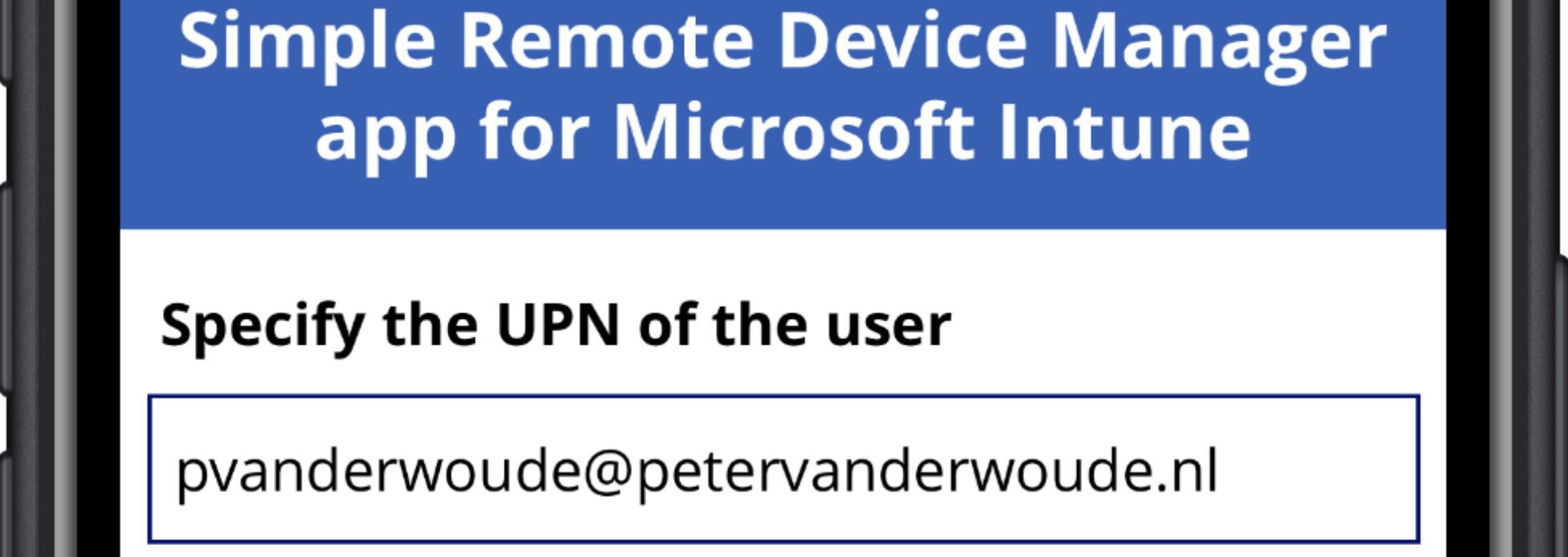 Simple Remote Device Manager app for Microsoft Intune Simple Remote Device Manager app for Microsoft Intune This ZIP-file can be imported in Power Apps to create an app that can be used to remotely manage devices via Microsoft Intune. As a prerequisite it’s required to create a connector as described here. |
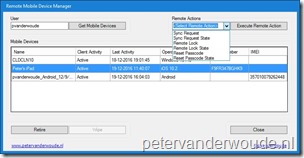 Remote Mobile Device Manager Remote Mobile Device Manager This script creates a form to allow an administrative user, without access to a ConfigMgr Console, to retire, wipe, lock, pin reset and sync mobile devices. |
This script creates a form that allows an user to search for the memberships of software updates to software update groups and deployment packages. |
This script creates a form to allow an user, without access to a ConfigMgr console, to import computer Information and directly add a user device affinity/ primary user. |
This script creates a form to show the collection details for a specific device. This includes information about the collections, deployments, variables, maintenance windows, power management and primary user. |
This script creates a form to allow a user, without access to a ConfigMgr console, to approve, or deny, approval requests. |
This script creates a form that shows the applications that depend on a specific application. This includes the application name and deployment type of both. |
| Get computer-targeted applications This script dynamically creates task sequence variables for every application that is targeted at the device. |
| Get user-targeted applications This script dynamically creates task sequence variables for every application that is targeted at the primary user of the device. |
| Change a Site Name via PowerShell This script allows you to change the site name of the specified site code. |
This script contains a function that gets the location of an object in the console. It will simply output the folder location on screen. |
The script will uninstall the Microsoft Intune client from a device. |
Last updated: 21-02-2021 (Adjusted download locations to GitHib)
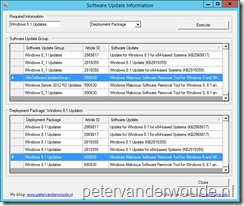
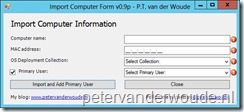 Import Computer Information via (a) PowerShell (Form)
Import Computer Information via (a) PowerShell (Form) Show Collection Details of a device via (a) PowerShell (Form)
Show Collection Details of a device via (a) PowerShell (Form)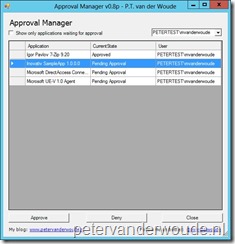 Manage Approval Requests via (a) PowerShell (Form)
Manage Approval Requests via (a) PowerShell (Form)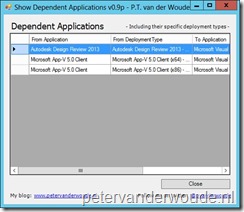 Show Dependent Applications via (a) PowerShell (Form)
Show Dependent Applications via (a) PowerShell (Form)
Hello, I tried running your “Import Computer Information via (a) PowerShell (Form)” script on a Windows Server 2008 R2 SP1 server running SCCM 2012 R2 CU3. I got errors regarding “Invalid Namespace” at root/SMS/site…. I noticed that this namespace does not exist. Some people say it should be root\cimv2\sms.
Do you have a script that would work in this test environment please?. Could you point me in the right direction? I am new to PowerShell.
Regards
Adrian
Hi Adrian,
This script should work on any environment. Keep in mind that the specific namespace only exists on a site server and not on any client machine.
Peter
Hi Peter,
Thanks so much for this valuable information and scripts. I used couple of script that you posted Wondering whether you can help me in script that I would like to create. I would like to get all collections details along with their deployment details. Let me know whether this is something that you can come up with.
Thanks & regards,
Vilas
Hi Vilas,
Please have a look at the Show Collection Details tool. That tool also displays the deployment information.
Peter
Hi Peter,
I have already looked into Show Collection Details Tool. It’s wonderful tool. I was creating report (.csv) using PS to show all collections (even if they are empty) in a site and their deployments. I was able to do it thru SQL query. I went a step ahead and created a report using FULL JOIN to show ALL collections and ALL application details.
Thanks.
Hi Vilas,
Good to hear that you found your solution. Also, feel free to share it 🙂
Peter
Peter,
I am trying to use the
Import Computer Information via (a) PowerShell (Form) directly from PowerShell on a 2012 R2 SP1 standalone site.
I am using the following syntax directly on the site server: .\ShowCollectionDetails_v1_1p.ps1 -ResourceId 16777227 -SiteCode B01 -SiteServer SC2012R2CMMSDN.
However, I get ‘Get-WmiObject: Invalid namespace “root/SMS/site_B01” error message. My sitecode is definitely correct, and when I use WMIExplorer to look at the root/SMS namespace, I don’t see anything like site_B01 or anything other site code. Any suggestions?
You should definitely see a root\SMS\site_[sitecode] namespace on your site server. If you don’t have that namespace, you’ve probably got bigger problems than a not working script.
I would like to receive new posts by email
You can subscribe to updates on the homepage by dropping your mail address in the Subscribe to updates widget.
Hello Peter, great scripts. Are the scripts already stored elsewhere, since the Technet Gallery no longer exists?
Sorry HG, not yet. Most of it is also a bit outdated. Are you looking for something in particular?
Regards, Peter
Hi Peter. I would really like to get my hands on the Show Dependent Applications via (a) PowerShell (Form). Is this available for download anywhere else? Thanks, Matt.
Hi Matt,
I’ve now moved the most requested scripts to a GitHub repository. This specific script can be found here: https://github.com/pvanderwoude/blog/blob/main/Show-DependentApplications.ps1
Regards, Peter